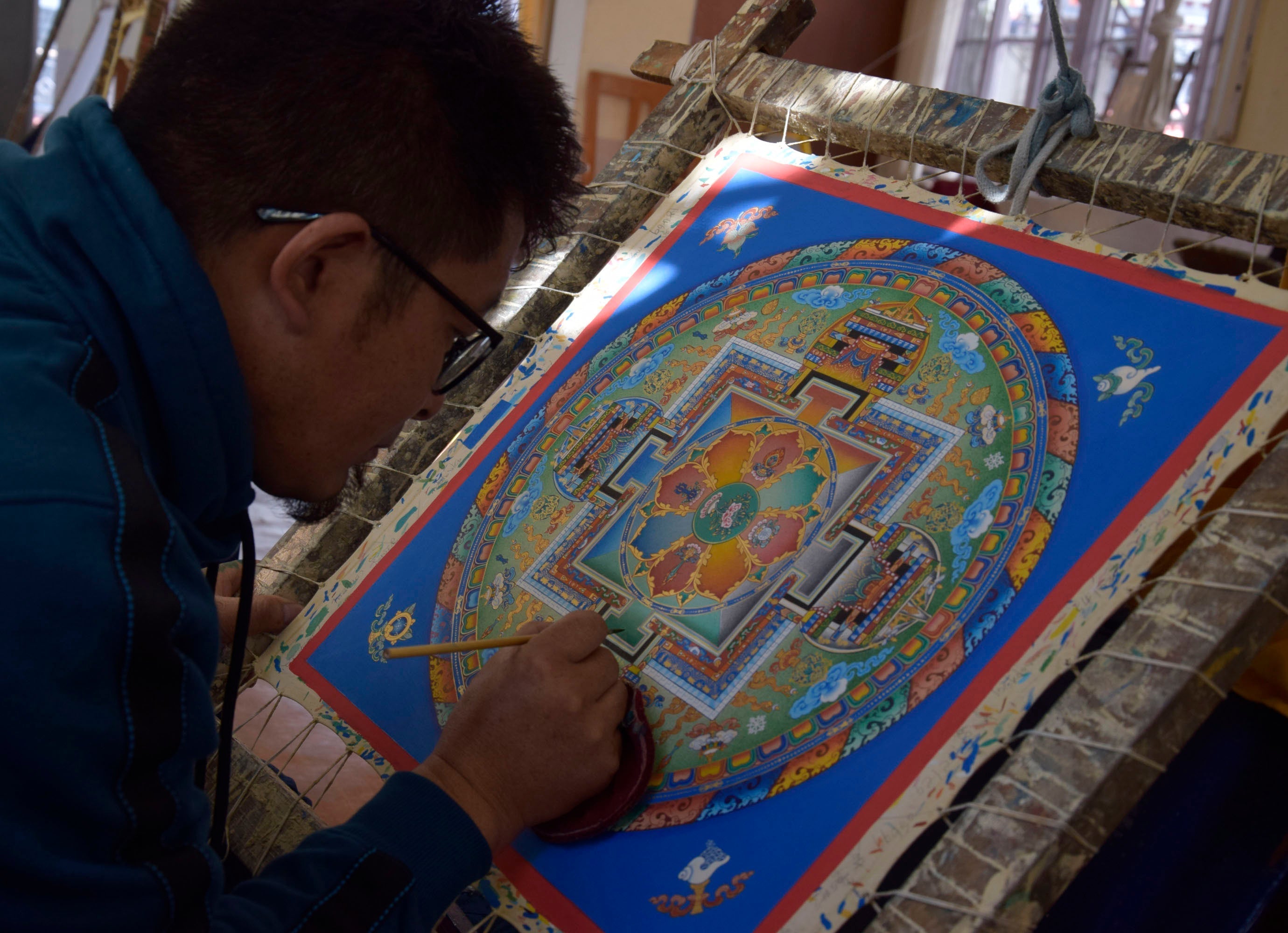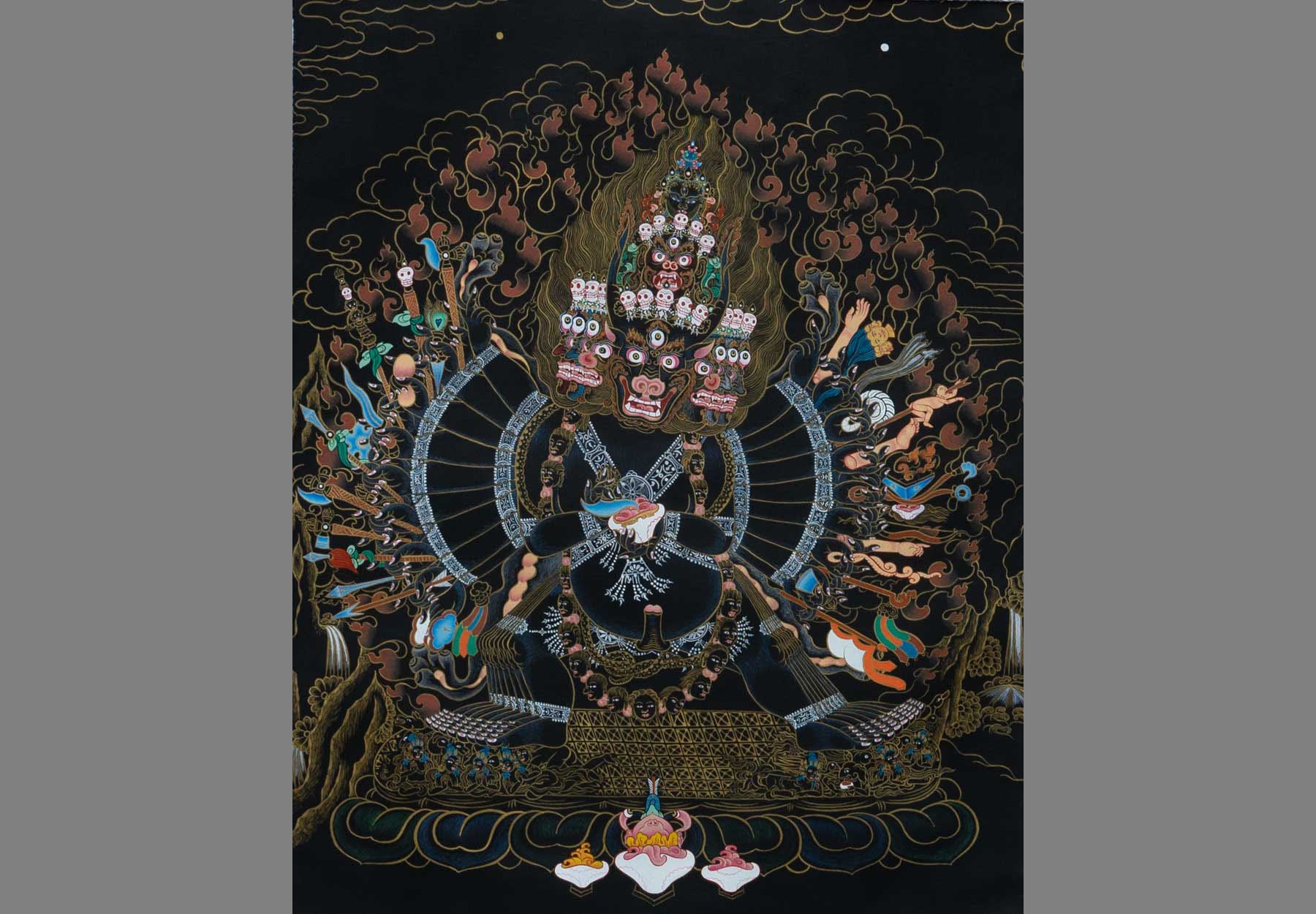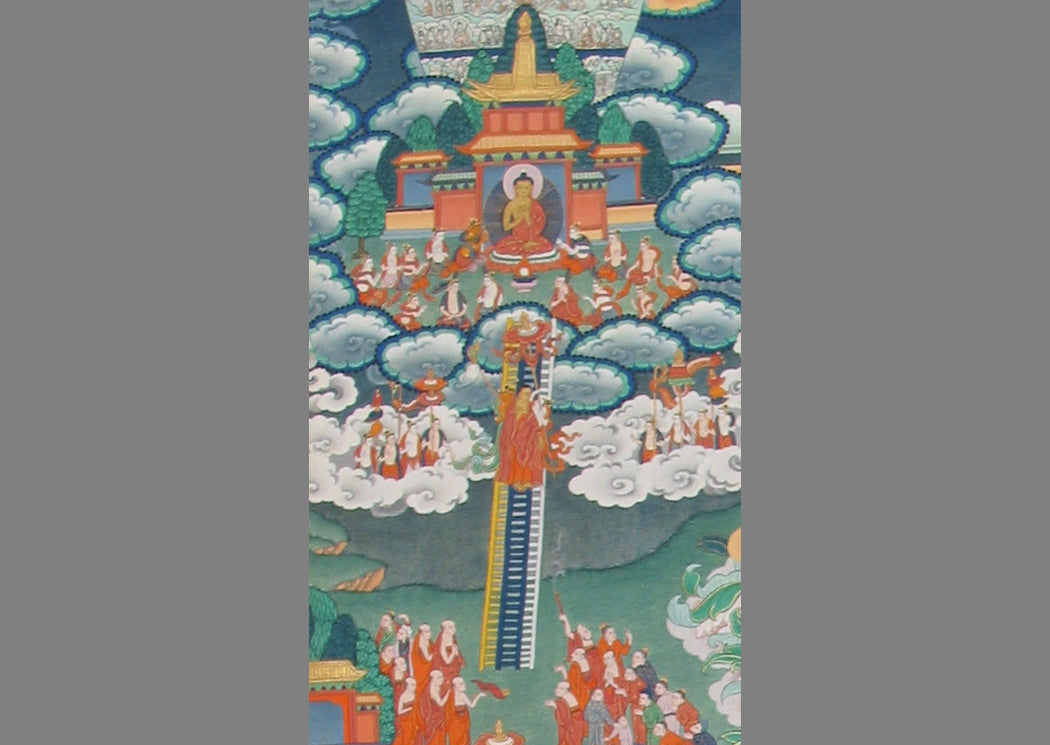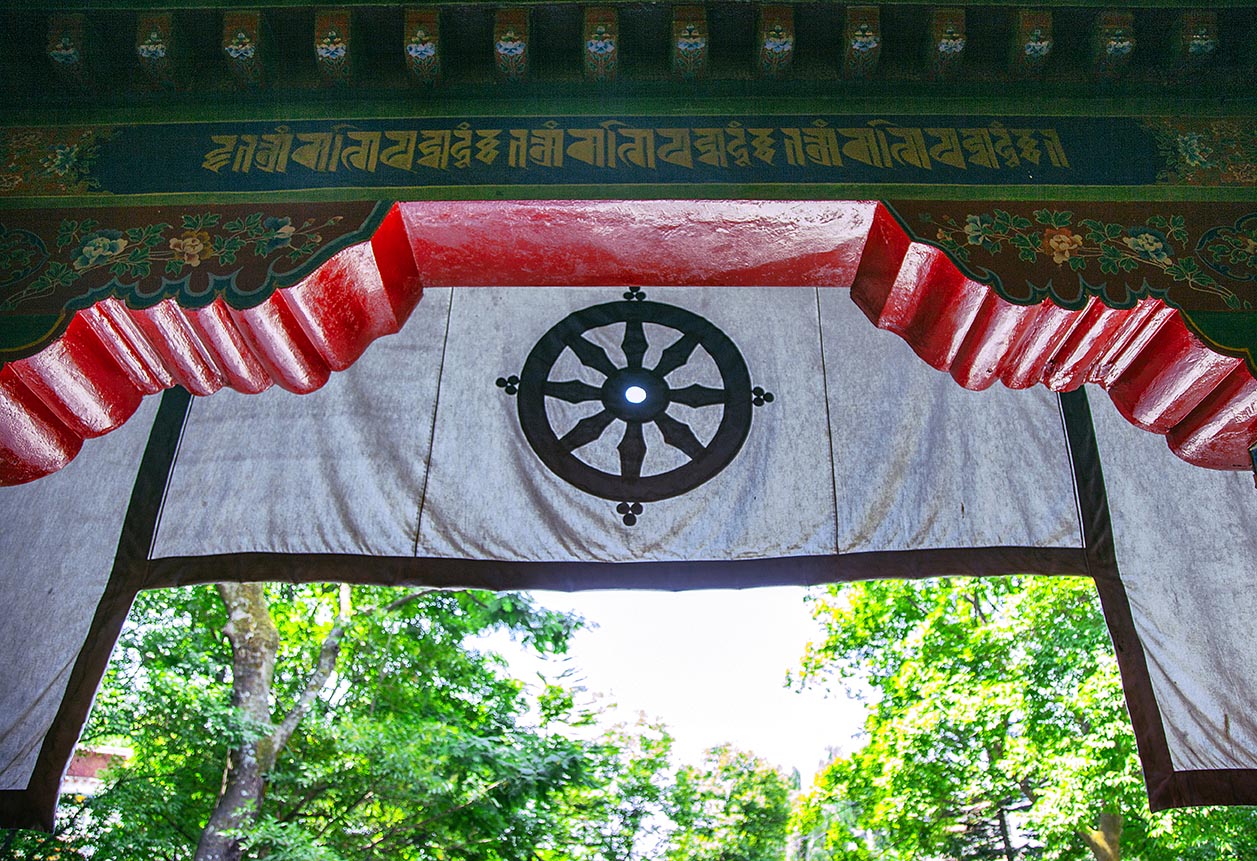
Interviews with Tibetan Craftsmen - Thangka
Norbulingka has been training artisans in traditional crafts since 1995, giving new purpose and employment to many young Tibetans in exile. We interviewed a few, who have been apprenticed since their teens, to better understand and appreciate the work they have devoted their lives to.
For the series – Interviews with Traditional Craftsmen, we bring the focus on the art, the artists and the process of their creation. Today, we speak with Tenzin Sithar, Thangka painter. Tenzin Sithar arrived from Tibet in 2006, joined Norbulingka in August 2010 as an apprentice, and enrolled as a thangka painter upon completion of his training.
When did you start your training and your reasons to join Thangka painting at Norbulingka?
I came to exile in India in 2006 with my family and was enrolled at the Tibetan Transit School from 2007-2009. There, I completed a three year program with some training in Tibetan drawing techniques, and having a family to support, searched for a job. I enrolled as a thangka painting apprentice at Norbulingka, hoping to qualify as an artist upon the completion of my training. I felt this path would secure my future, and, looking back, I am very happy I made that decision.
What do you like the best about your work? Do you have favorite things you like to do?
I like painting mandalas, working on them gives me a feeling of peace and I have painted several Avalokiteshvara mandalas. I also enjoy mentoring young apprentices; I feel that many young Tibetans have little awareness of our rich artistic heritage, and few show interest in learning a traditional skill, so when I see an apprentice who is inspired to learn, I feel it my duty to pass on any knowledge I can. My teachers here did this for me, and I wish to contribute to the next generation of artists in this way. This is the way our traditions were passed down in Tibet, from master to disciple for centuries.
Do you remember any favourite piece you have made?
After completing my apprenticeship, I painted an 18in Vajrabhairava Thangka. This gave me a great sense of accomplishment, perhaps because it was my first piece, perhaps for my connection with the subject. I felt great emotion upon completing it and it remains my favourite.
Where do you see yourself in 20 years? What do you want to accomplish by then?
To become a qualified Thangka artist and achieve mastery in this art, one needs to be well read in Tibetan religious texts. Thangka painting is an expression of Tibetan Buddhism and a painter must often refer to the contents of religious texts to create a new piece or check iconographical detail. This makes fluency in deciphering scriptures essential. I feel I need to improve my understanding of religious texts and plan to spend more time doing that. In 20 years, I see myself as a better artist, with a deeper understanding of the subject I paint.
I feel pride in what I am doing. I believe that Thangka painting is one of the great artistic traditions of Tibet. I look to gradually improve my skills and knowledge, through awareness of my mistakes. I am deeply grateful to my master (Gen la) for guiding me and showing me the right direction.







